 Written by Megan Smith, PT
Written by Megan Smith, PT
We know that walking boots are perhaps one of the most recognizable pieces of medical equipment thanks to their common and frequent use for treating most bone fractures and breaks. Walking casts, also commonly referred to as walking boots, air casts, or orthopedic boots, are specially designed medical devices that immobilize certain regions of the leg, ranging from just the ankle to the foot through the calf.
By immobilizing the foot, ankle, calf, or all three, a walking cast prevents injured components from moving and keeps them securely in place for more effective healing. This allows injuries to heal even while you remain on the move, making the walking cast a great solution for post-surgical recovery as well.
Due to their common use and the large number of different conditions or injuries that may be treated using them, walking casts are offered in an expansive range of sizes, shapes, constructions, and specialties. Some of the common sub-categories of walking casts include high-tops, low-tops, ankle casts, stiff or soft casts, and air-cast boots, to name a few. We know it can be overwhelming to look at your options when facing so many variations but don’t worry, we’ll explain the key differences between these categories later.
Naturally, with such a diverse field of different walking casts, the process of finding the right product to meet the needs of you or your loved one can seem like a daunting challenge. With that in mind, we will present you with all of the need-to-know information to make sure that you’re getting the perfect walking cast for you. We’ll also outline some of the important considerations to make when trying to determine what features or specifications you’ll need for your walking cast.
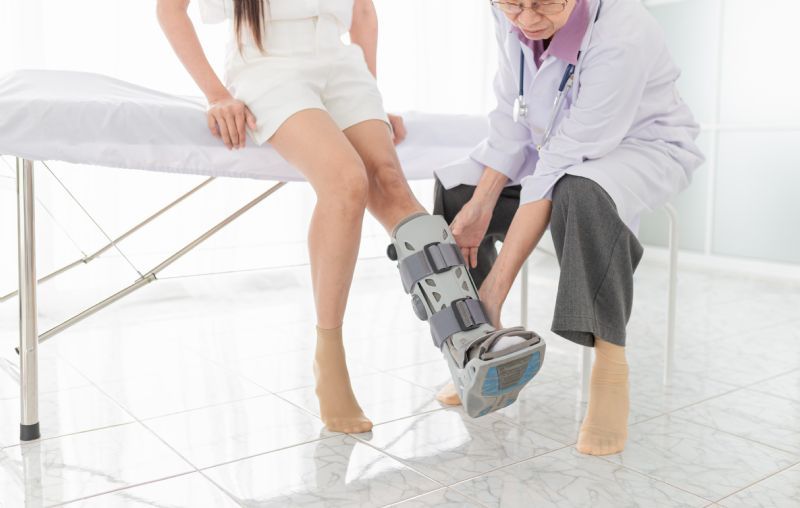
If you have a broken foot, we recommend consulting with your doctor first and foremost. Foot fractures and breaks come in many specificities and severities which will determine how long you should wear your walking boot. Tall boots are best for foot fractures and breaks, as they immobilize both the foot and the leg, allowing your foot to heal properly. We strongly recommend pneumatic boots for foot fractures, as the added protection helps to limit motion and assists in healing.
Depending on the location of the sprain, fracture, or break, and the duration in which you wear the medical boot, some people have reported pain or soreness in their knees, lower back, and hips. Most people report pain within the first two weeks of boot wear.
We recommend contacting your healthcare provider to discuss your specific condition, but in our experience, people typically wear their walking boots for 12 to 16 hours a day. This will fully depend on your injury and your doctor’s instructions. It’s important to follow your clinician’s instructions for your individual needs, as this can severely impact the proper rate of healing.
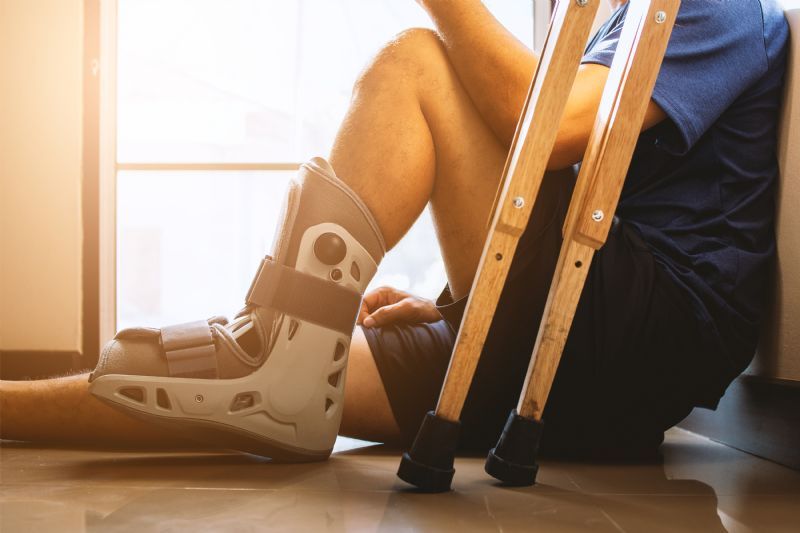
It is usually best to avoid applying too much weight to a hard cast, especially if it has been recently applied. However, using a walking cast to protect both your leg and the cast will allow you to be able to move around and apply weight. We still recommend using crutches while wearing a cast to allow the leg to heal properly, though.
Casts must be tight enough to significantly limit the movement of the injured region of the body. The tightness of your hard cast will be determined for you by the doctor who applies it. However, for walking casts, the tightness should be enough so that the hard cast and the walking cast move together with no slipping or shaking.
Exercise is possible while wearing a walking cast, but it requires some modification from what you might be used to. We recommend that upper body exercises should be done using a bench or a seated machine whenever possible. Exercises that emphasize the upper body without extensive use of the legs are ideal, while cardio exercises such as running should be avoided.
Instead, low-pressure cardio exercises, such as using a hand pedal or low-resistance elliptical exercise are recommended. However, before performing any exercise while wearing a walking cast, we strongly encourage you to discuss your options with your doctor or physical therapist. They will be able to explain the limits of your allowed exercise and can even recommend certain exercises that are ideal for you.
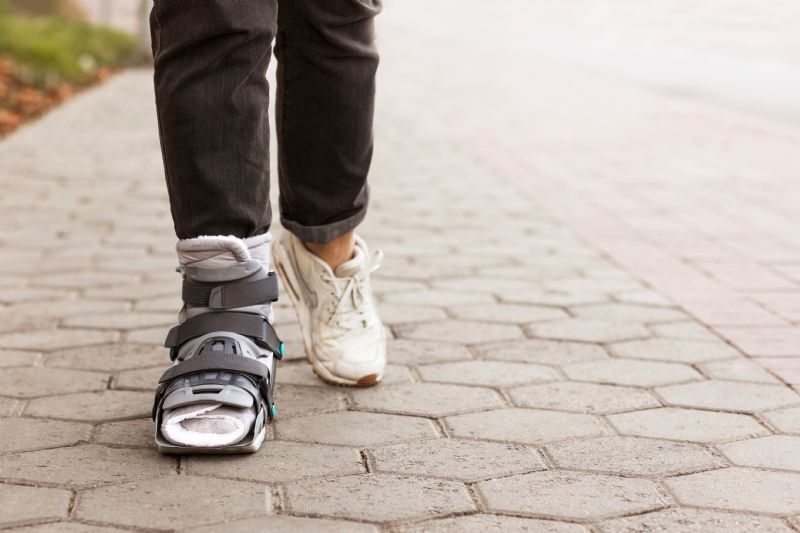
Walking casts act as a treatment device for a variety of injuries or conditions that affect the foot, ankle, and lower leg. Because of the range of conditions that they can treat, walking casts are similarly diverse in their designs. Given this fact, we’ll start by outlining some of the major types of walking casts and the specific conditions and types of patients they’re designed for.
When we mention walking casts in conversation, people usually think of a high-top walking boot. These boots wrap around the patient’s leg from the toes to the middle of the calf. These casts are most often used in the treatment of injuries or conditions impacting the ankle or the calf.
High-top walking cast boots are characterized by a tighter, cushioned leg wrap surrounded by a hard, durable outer boot layer composed of thick plastic or sometimes a combination of plastic and metal portions. This durable outer layer of the boot is usually fastened around the inner wrapping using Velcro or another adhesive banding.
A noteworthy example of this style of walking cast can be seen in Allard USA’s Tall Walking Cast Boot.
A logical counterpart to the high-top walking casts is the low-top walking cast. These products very closely resemble high-top boots, but they're cut lower so they don't extend as far up on the leg. Most low-top walking casts cover from the toes to the lower calf just above the ankle. In our experience, this design makes these casts particularly useful in treating injuries or conditions that impact the foot, heel, or lower ankle.
An example of this form of boot can be seen in Allard USA’s Short Walking Cast Boot.
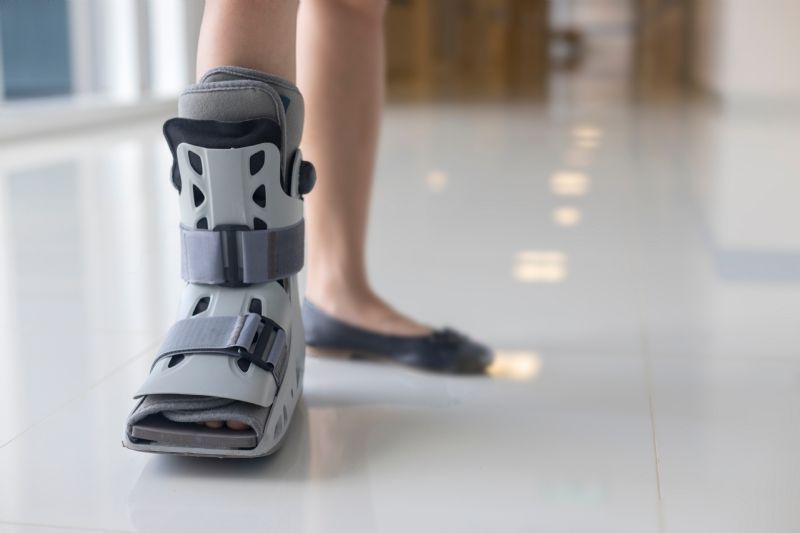
Air Cast Boots represent an innovative advancement from the standard high-top or low-top walking casts. Unlike traditional walking casts, Air Cast Boots surround the covered region of the leg in a supportive air cushion that can be easily adjusted to provide customizable comfort and support. This design has been shown to promote a faster healing time while also allowing for increased mobility.
While traditional walking casts are almost always designed to be used by patients with hard casts, Air Cast Boots can serve the role of both the walking cast and the cast itself. This is particularly useful, as it allows patients to remove the cast in certain circumstances, such as when showering or to allow fresh air to reach that leg region.
It is important to note, however, that Air Cast Boots are intended only for minor injuries and should not be used in place of a cast for treating major injuries such as ligament damage or broken/fractured bones. For this reason, we use Air Cast Boots as a transition between a hard cast and no cast at all. By acting as an intermediate, the Air Cast Boot provides the necessary protection but also allows the patient to build up strength in the leg and have slightly more freedom than a hard cast.
Some popular Air Cast Boots we offer include ErgoActives’ Shoebaum Air Cam Walking Cast Boot.
Hard Cast Shoes, as their name implies, are designed as a rough shoe that wraps around the foot of a hard cast. These products do not offer the extensive protection and support that is provided by the previously discussed walking casts. Instead, they serve as a minor protective layer. In our experience, hard cast shoes are typically used to protect the foot region of a hard cast from being scuffed or damaged during a patient’s daily activity.
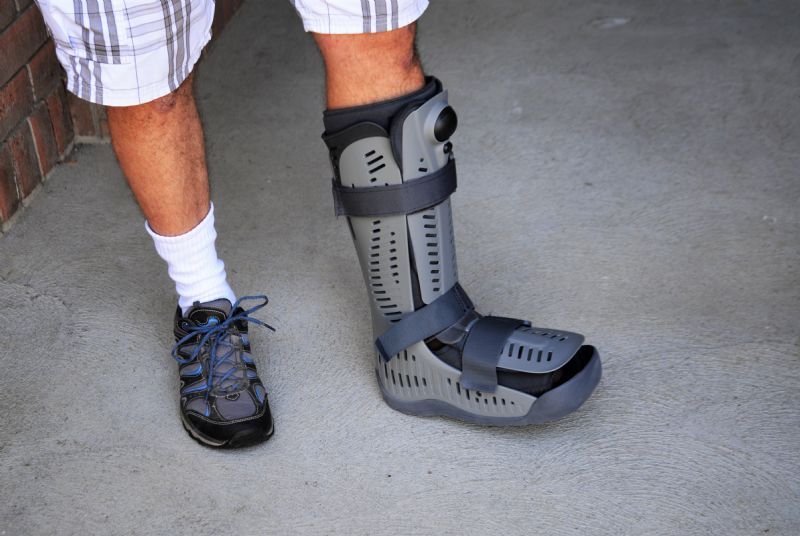
In addition to the wide variety of different walking cast styles and models, there is a range of design features and variables that are important to take into consideration before landing on your final selection. We'll walk you through the most important of those now.
While likely an obvious consideration to make, it is worth the reminder that walking casts come in different sizes, often corresponding to shoe sizes or specific measurements of the foot with any added bulk of the cast. We encourage you to review the size options available for each walking cast you consider and what the sizing chart is based on before making your final purchase. Part of ensuring adequate healing is making sure that the boot you choose is appropriately sized to provide proper support and immobilization.
While the majority of walking casts use Velcro straps to keep the cast secured on the patient, this is not always the case. In our experience, some products, particularly smaller casts or cast shoes, may use clasps or non-Velcro-based straps for fastening. While perhaps not a crucial concern, it is worth reviewing what kind of straps a product has before making a purchase, especially if you have a preference, or if you live with a condition that makes it difficult to fasten small clasps.
One of the more innovative features available in some walking casts is anti-shock technology. While most walking casts are capable of cushioning impact, some take it a step further by implementing anti-shock designs to further decrease the risk of injury. Specific anti-shock and anti-vibration soles or cast constructions are very useful in our opinion, especially if you're suffering from a large amount of pain and discomfort from the impact associated with walking.
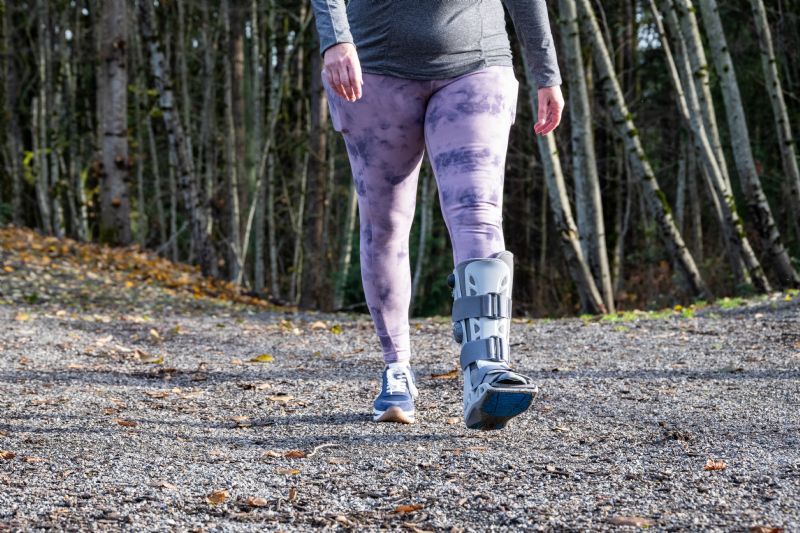
The interior of walking casts often features liners made with a range of different materials. For most products, these liners are designed to be soft, supportive, and comfortable. However, there are a variety of choices available, and some may be preferable for certain people or weather conditions. With that in mind, we think it is worth reviewing what the interior lining of a walking cast is made of, as well as if replacement lining is available, should the lining become worn down.
Some walking casts implement added supports, usually made of dense plastics or metals such as aluminum. In our experience, these are used to provide an additional degree of support to the leg. These supports are most common in high-top walking casts or Air Cast Boots that require more vertical stability, and they may not be required for every user. But, if you want either more support or greater freedom of mobility, it is worth checking to see if a product has them before making a purchase.
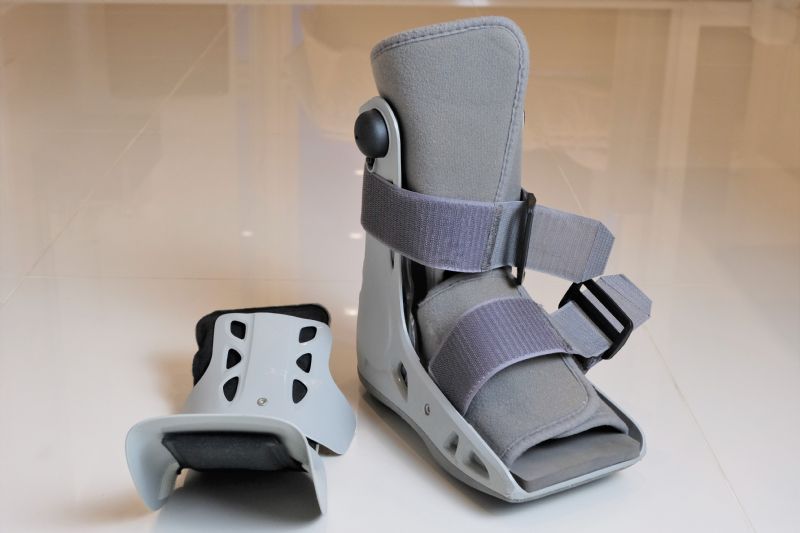
As you can see, there is a notable variety when it comes to the different types of walking casts. Therefore, we highly recommend that you discuss walking casts with your doctor, as they will be able to help you determine which type is best suited for your needs.
However, we hope that this guide has provided some helpful insight into the different types of walking casts and which might be the best for your needs. For more information, check out our full catalog of walking casts, and read more helpful buying guides as well as tips and tricks for better living at Caregiver University.

Megan has been a part of Rehabmart since its inception nearly 20 years ago. For the past several years she has been enjoying her role as HR Director while maintaining her Physical Therapy license. When she isn't working on her next in-service or working to find a new team member, she enjoys her five children, helping those who have PT type ailments, baking, practicing yoga, and working out.